Explore the untold stories of famous sisters in the Bible, whose wisdom and resilience shaped history in ways you never knew.
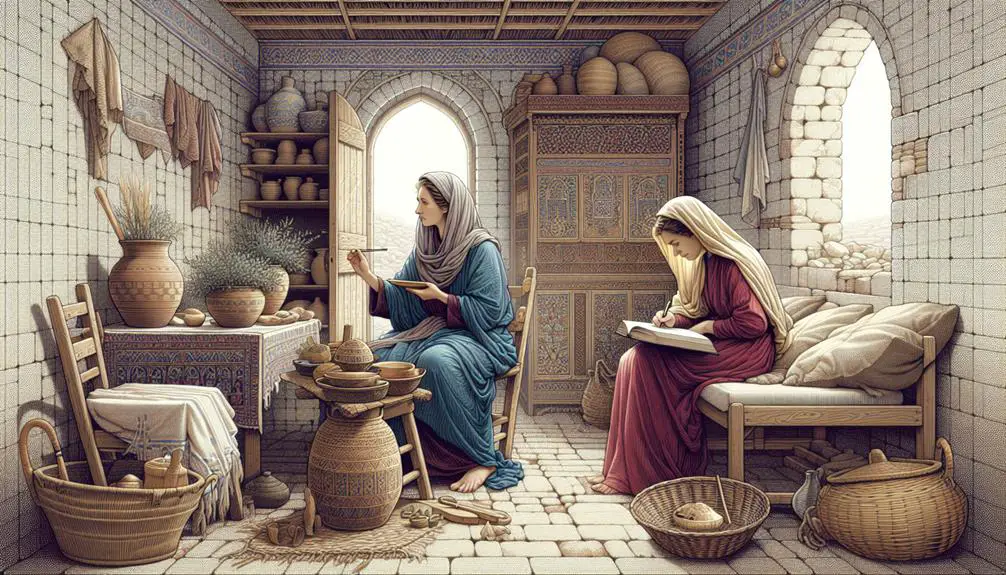
Famous Sisters in the Bible
You might not know that the Bible not only chronicles the lives of prominent men but also sheds light on the influential roles of sisters in these narratives. From Miriam's protective oversight of Moses to the contrasting personalities of Mary and Martha, these stories offer a rich tapestry of female resilience and wisdom.
Leah and Rachel's complex relationship adds a layer of human emotion to the ancient texts, while Rebekah's interactions with her brother Laban reveal intricate family dynamics. The tale of Zeruiah, Abigail, and their brother David opens a window into the lesser-known family ties that influenced the course of biblical history.
As we explore these relationships further, you'll uncover how these women's lives shaped and were shaped by their times, offering insights that remain relevant today.
Key Takeaways
- Biblical sisters played pivotal roles in shaping narratives and influencing key figures.
- Their stories highlight the balance between action, wisdom, and spiritual priorities.
- Themes of rivalry, love, and redemption are common in sisterly dynamics.
- Sisterly relationships in the Bible reflect broader family and societal values.
Miriam and Moses
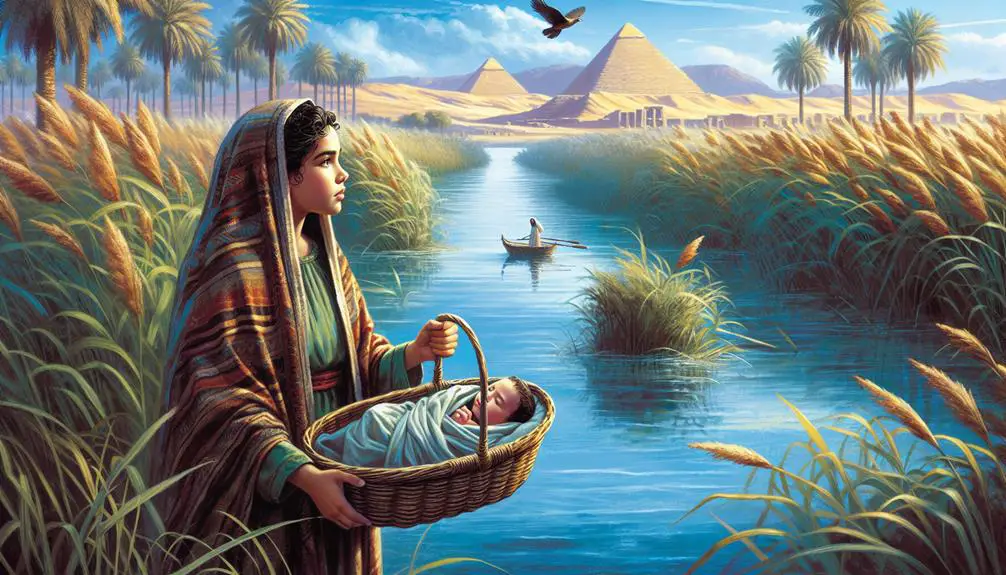
Miriam, as Moses' elder sister, played a pivotal role in his early life, showcasing a blend of courage and wisdom that significantly influenced his journey to becoming a key figure in biblical history. Her actions, particularly during Moses' infancy, underscore her critical role in his survival and subsequent rise to leadership. Miriam's prophetic role is acknowledged within the scriptural texts, marking her as one of the early female prophets in the biblical narrative. Her foresight and quick thinking saved Moses' life, setting in motion the events that would lead to the Israelites' exodus from Egypt.
The symbolism of water in Miriam's story is profound and multifaceted. Initially, water represents both danger and salvation in Moses' early life, as he's placed in the Nile to escape Pharaoh's decree. Miriam's watchful presence ensures his safe passage into the hands of Pharaoh's daughter, turning a potential death sentence into a life of privilege and purpose. Later, water emerges as a symbol of sustenance and divine provision through Miriam's association with the well that provided for the Israelites in the desert, further cementing her role as a protector and provider.
Analyzing Miriam's contributions, one recognizes her integral place in the narrative of Moses and the Israelites. Her actions not only ensured Moses' survival but also highlighted her as a figure of divine wisdom and guidance. Miriam's prophetic role and the thematic presence of water symbolism in her story enrich our understanding of her character and her indispensable role in biblical history.
Mary and Martha
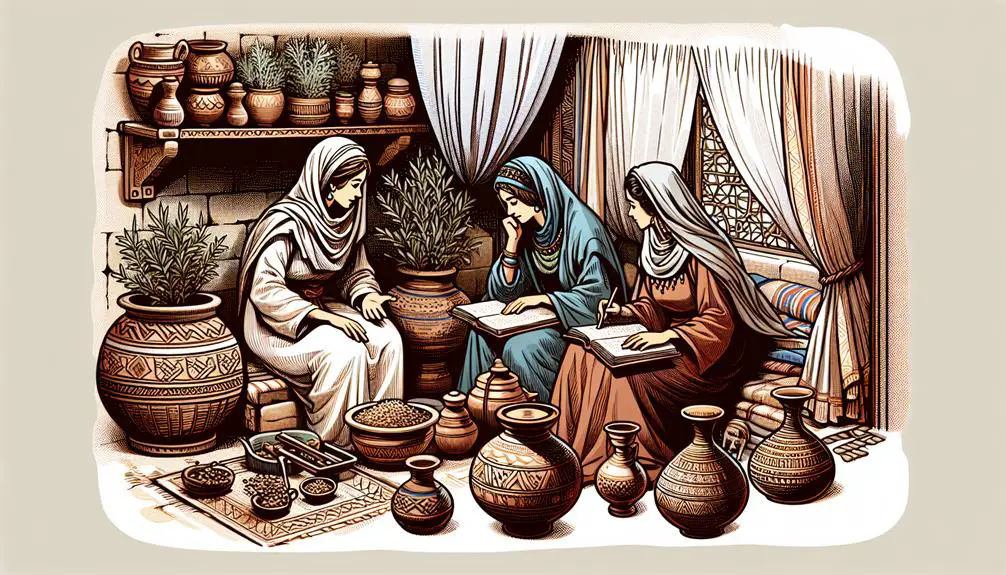
ARTICLE TITLE: Famous Sisters in the Bible
PREVIOUS SUBTOPIC: 'Miriam and Moses'
CURRENT SUBTOPIC: 'Mary and Martha'
Turning our attention to the New Testament, we encounter Mary and Martha, sisters who offer a compelling study in contrasts and devotion within the biblical narrative. These siblings, residing in Bethany, provide rich hospitality lessons through their interactions with Jesus. Their story, particularly in the Gospel of Luke, showcases fascinating personality contrasts that have intrigued scholars and believers alike.
Mary and Martha's tale is not only about service and listening but also about understanding the balance in one's spiritual and practical duties. Martha, often depicted as the more pragmatic sister, is concerned with the duties of hosting, emphasizing the importance of hospitality in biblical times. In contrast, Mary opts to sit at Jesus' feet, absorbing his teachings, thus prioritizing spiritual nourishment over traditional roles.
Aspect |
Martha |
Mary |
|---|---|---|
Focus |
Hospitality |
Learning |
Nature |
Active |
Contemplative |
Reaction |
Worry and Upset |
Peaceful and Attentive |
Lesson |
Balance is key |
Spiritual priority |
This juxtaposition invites readers to reflect on their own lives, considering the balance between action and contemplation. It suggests that true hospitality extends beyond mere physical preparations to include being present and attentive to our guests, in this case, signifying Jesus. Through Mary and Martha, we're taught that while service is vital, so too is taking the time to listen and absorb wisdom, highlighting a nuanced interpretation of duty and devotion.
Leah and Rachel
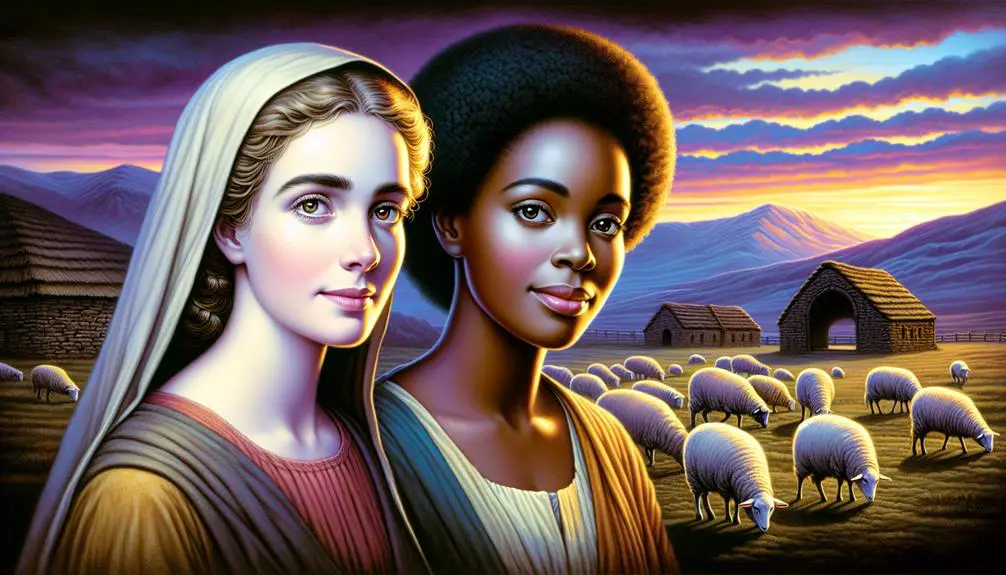
Delving into the Old Testament, we encounter Leah and Rachel, sisters whose complex relationship and intertwined destinies offer profound insights into themes of love, jealousy, and divine intervention. Their story is a poignant exploration of sibling rivalry and marital deception, set against the backdrop of ancient patriarchal customs.
Leah and Rachel's lives were defined by their relationship with Jacob. Leah, the elder sister, was married to Jacob through an act of deception orchestrated by their father, Laban. Despite being the first wife, Leah's life was shadowed by Jacob's preference for Rachel, her younger sister. This favoritism ignited a fierce sibling rivalry, exacerbated by their competition for Jacob's affection and the desire to bear him children.
The sisters' story is marked by moments of both conflict and cooperation, illustrating the complex dynamics of familial relationships. Their narrative provides a window into the lives of women in biblical times, revealing how they navigated societal and personal challenges.
- Sibling rivalry: Leah and Rachel's relationship was strained by competition for their husband's love, a theme that resonates through their story.
- Marital deception: The initial act of deceit by Laban, substituting Leah for Rachel on the wedding night, sets the stage for the ensuing drama.
- Divine intervention: Both sisters experience moments of divine blessing, emphasizing the role of faith and providence in their lives.
Leah and Rachel's tale is a testament to the enduring human themes of love, rivalry, and redemption, offering timeless lessons on the complexities of family relationships.
Rebekah and Laban
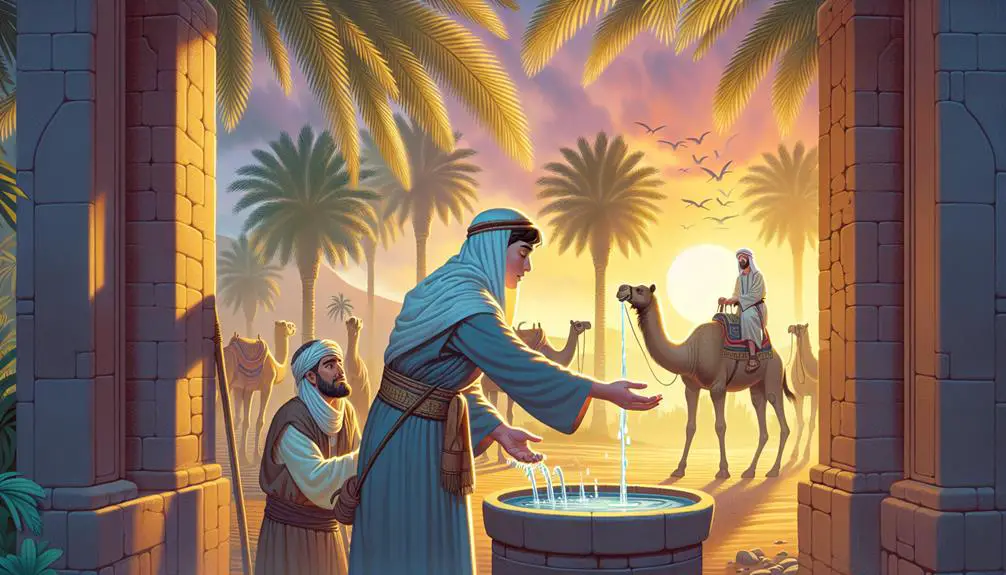
Rebekah and Laban, pivotal figures in biblical narratives, showcase the intricate dynamics of sibling relations within the framework of ancient Near Eastern familial structures. Their interactions provide a rich tapestry for understanding the complexities of family dynamics and the cultural impact of these relationships in their society.
You'll observe that Rebekah, a key matriarch in the Genesis narrative, and her brother Laban, play significant roles not just within their immediate family but also in the broader unfolding of biblical history. Their story illustrates the negotiation of marriage alliances, the exchange of wealth, and the preservation of familial lineage, which were central elements in their culture.
Analyzing their relationship, you see a blend of cooperation and conflict. For instance, Laban's role in Rebekah's marriage to Isaac highlights the importance of brotherly consent in matrimonial arrangements, reflecting the patriarchal norms of their society. However, Laban's later interactions with Rebekah's son Jacob reveal a more complex and contentious side of family dynamics, underscoring the potential for manipulation and deceit within these relationships.
The cultural impact of Rebekah and Laban's story extends beyond their immediate historical context. It provides insights into the values, practices, and challenges of ancient Near Eastern families, offering parallels to modern discussions on family roles, power dynamics, and the consequences of individual actions on familial harmony.
In essence, Rebekah and Laban's narrative serves as a profound study on the enduring nature of family relationships, encapsulating both the unity and tensions that define human interactions across cultures and epochs.
Zeruiah, Abigail, and David
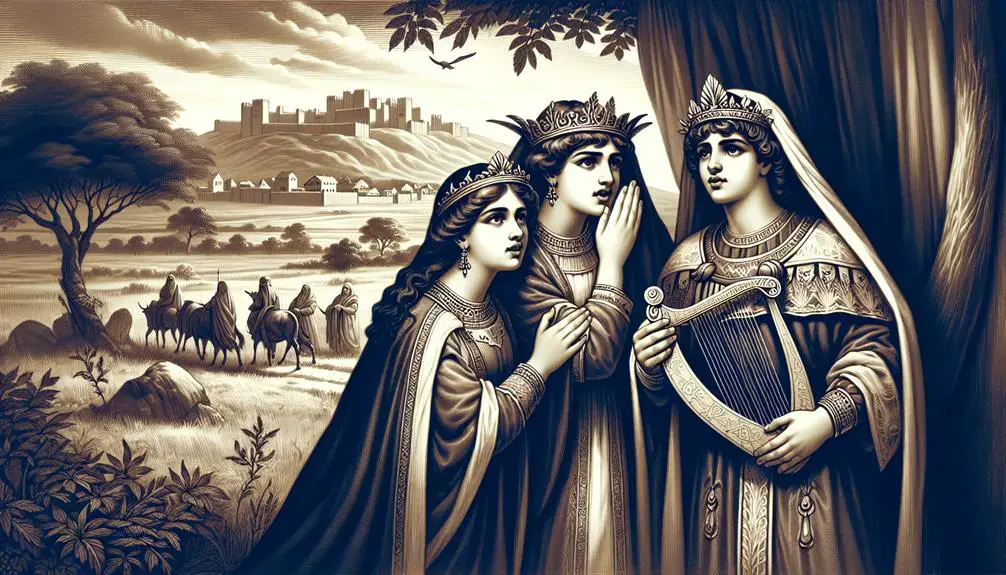
Within the intricate tapestry of biblical narratives, Zeruiah and Abigail stand out as sisters who significantly influenced the life and reign of their brother, King David, reflecting the complex interplay of familial loyalty and political maneuvering in ancient Israelite society. Their roles underscore the importance of sibling dynamics in forging political alliances and consolidating power, particularly in the context of David's army and his quest for unification and stability within the Kingdom of Israel.
Zeruiah, a formidable figure, was the mother of three of David's most trusted generals, Joab, Abishai, and Asahel. Her sons' positions within David's military apparatus not only highlight her indirect influence on the kingdom's military strategies but also underscore the strategic importance of familial alliances in ancient political landscapes. On the other hand, Abigail's relationship with David, though less directly involved in military affairs, still played a crucial role in David's personal and political life, further illustrating the multifaceted ways in which sibling relationships impacted leadership and governance in biblical times.
To deepen your understanding, consider these aspects:
- The strategic placement of Zeruiah's sons within David's army, shaping military and political outcomes.
- The delicate balance between familial loyalty and political ambition, as exemplified by Zeruiah and Abigail's interactions with David.
- The broader implications of these sibling dynamics for understanding leadership, loyalty, and power in biblical narratives.
Analyzing these relationships offers valuable insights into the complex web of social, political, and familial forces that shaped leadership and governance in ancient Israel.
Frequently Asked Questions
How Did the Cultural and Societal Norms of the Time Influence the Roles and Relationships of Sisters in Biblical Narratives?
You're exploring how cultural and societal norms shaped roles and relationships, focusing on gender roles and religious practices. These norms heavily influenced how individuals interacted and their expected behaviors.
In the context you're curious about, they dictated the dynamics between siblings, often limiting women's roles to specific, socially acceptable functions. Your analysis should consider how these expectations affected their relationships and the narratives surrounding these figures, providing a deeper understanding of their stories.
What Are Some Examples of How Modern Interpretations or Retellings of These Biblical Stories Have Changed the Perception of These Sister Relationships?
You're scrolling through your feed and stumble upon modern adaptations of ancient tales, showcasing how sisterhood symbolism evolves with time. These reimaginings often shift perceptions, highlighting camaraderie, resilience, and empowerment among women.
Analyzing these narratives reveals a nuanced understanding of relationships, where modern interpretations breathe new life into old stories. This analytical approach uncovers how contemporary retellings reshape our view of sisterly bonds, blending historical context with present-day values and insights.
Are There Any Archaeological or Historical Evidence That Provides Insights Into the Lives of Sisters in Biblical Times Beyond What Is Written in the Scriptures?
When exploring the lives of sisters in ancient times, you'll find sister artifacts and genealogical research pivotal. These sources offer rare glimpses beyond scriptures, revealing daily realities and social standings of women.
Such evidence, though scarce, includes household items, inscriptions, and familial records. They collectively paint a richer, more nuanced picture, challenging and expanding our understanding of women's roles and relationships in historical contexts.
How Have Different Religious Traditions and Denominations Interpreted the Significance of Sisterhood in These Biblical Stories Differently?
You'll find that religious traditions and denominations interpret the significance of sisterhood uniquely, often influenced by liturgical practices and iconographic representations. These interpretations shape how communities view biblical sisterhood, integrating it into their teachings and worship.
Differences might stem from theological perspectives or cultural contexts, enriching the understanding of these relationships. This diversity reflects the multifaceted nature of interpreting sacred texts, offering a broad spectrum of insights into the role of sisterhood.
Can the Dynamics and Conflicts Between These Famous Biblical Sisters Offer Any Lessons or Insights Into Contemporary Discussions on Sibling Rivalry and Family Relationships?
Absolutely, the dynamics and conflicts you're exploring reveal much about handling personality clashes and breaking down communication barriers in family relationships. Analyzing these stories, you'd find that sibling rivalry, often stemming from misunderstanding and competition, mirrors contemporary issues.
Conclusion
In scrutinizing the sagas of these scriptural siblings, you've traversed tales of tenacity, turmoil, and tenderness. From Miriam's motherly musings to the sibling rivalry of Leah and Rachel, each narrative not only nuances our understanding of familial fidelity but also enriches the tapestry of theological thought.
These stories serve not merely as moral musings but as a mirror reflecting the multifaceted nature of human relationships, reverberating with relevance in both ancient and modern milieus.



Sign up